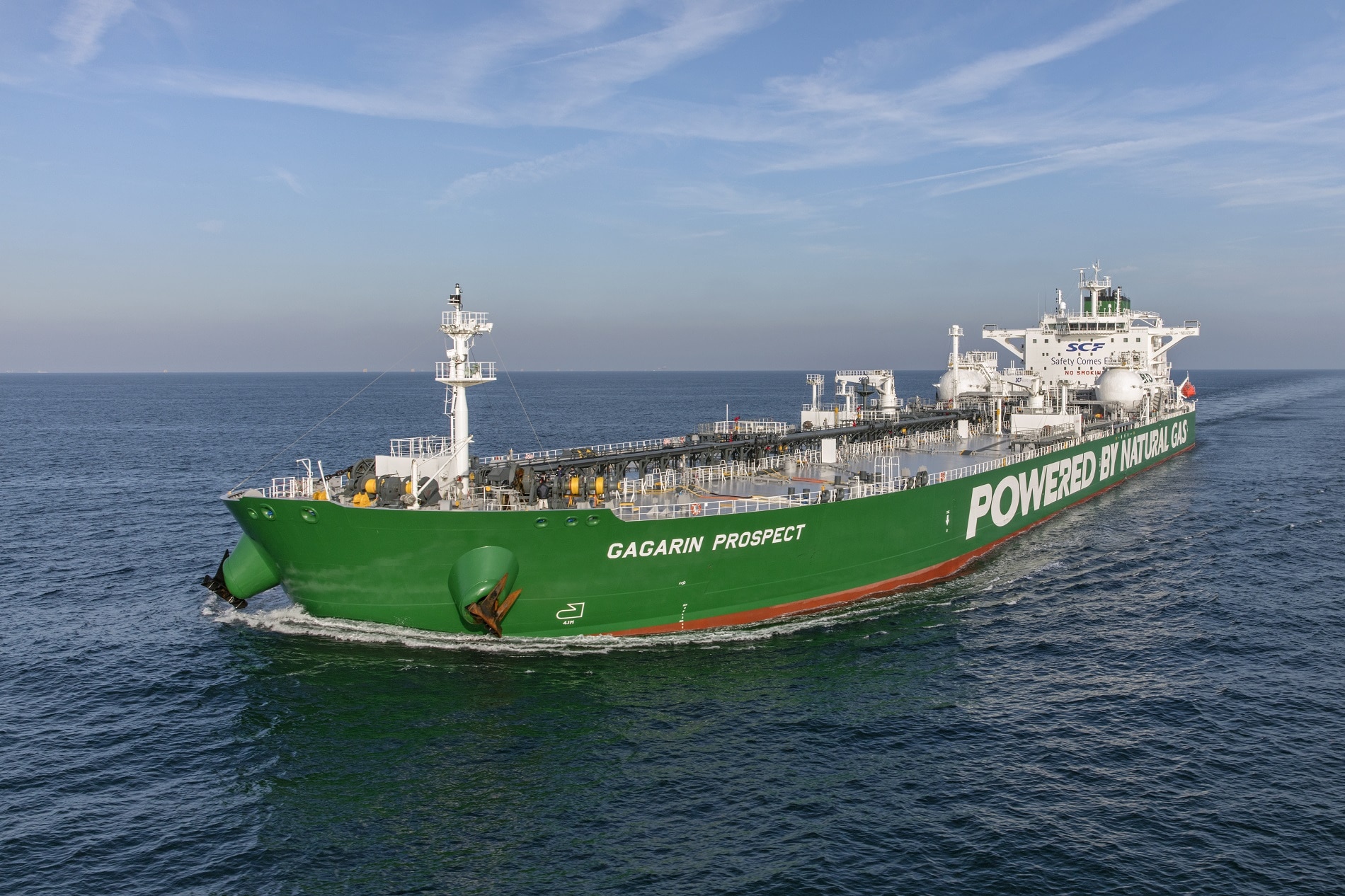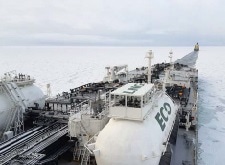SCF’s global environmental initiative
Advantages of operating on LNG
The reduction of sulphur oxides and soot emissions reaches 100%, nitrogen oxides emissions decrease by 76% and carbon dioxide emissions by 15% as compared with power plants running on conventional heavy fuel.
Commercial voyage of Lomonosov Prospect along the Northern Sea Route in October 2018

Length: 250 metres
Breadth: 44 metres
Deadweight: 113 170 tonnes
Ice class: ICE-1B
(hull: 1А)

Gagarin Prospect (part of the fleet since July 2018)
Lomonosov Prospect (part of the fleet since October 2018)
Mendeleev Prospect (part of the fleet since November 2018)
Korolev Prospect (part of the fleet since February 2019)
Vernadsky Prospect (part of the fleet since March 2019)
Samuel Prospect (the tanker is under construction and will be named after Sir Marcus Samuel, the founder of Shell Transport & Trading Co)


Development of LNG bunkering infrastructure
The first ship-to-ship LNG bunkering took place at the Port of Rotterdam in early October 2018 when Shell’s bunker vessel Cardissa re-fuelled SCF’s large-capacity tanker Gagarin Prospect.
This set an important precedent for the global shipping industry to use LNG as a fuel for large-capacity vessels.


